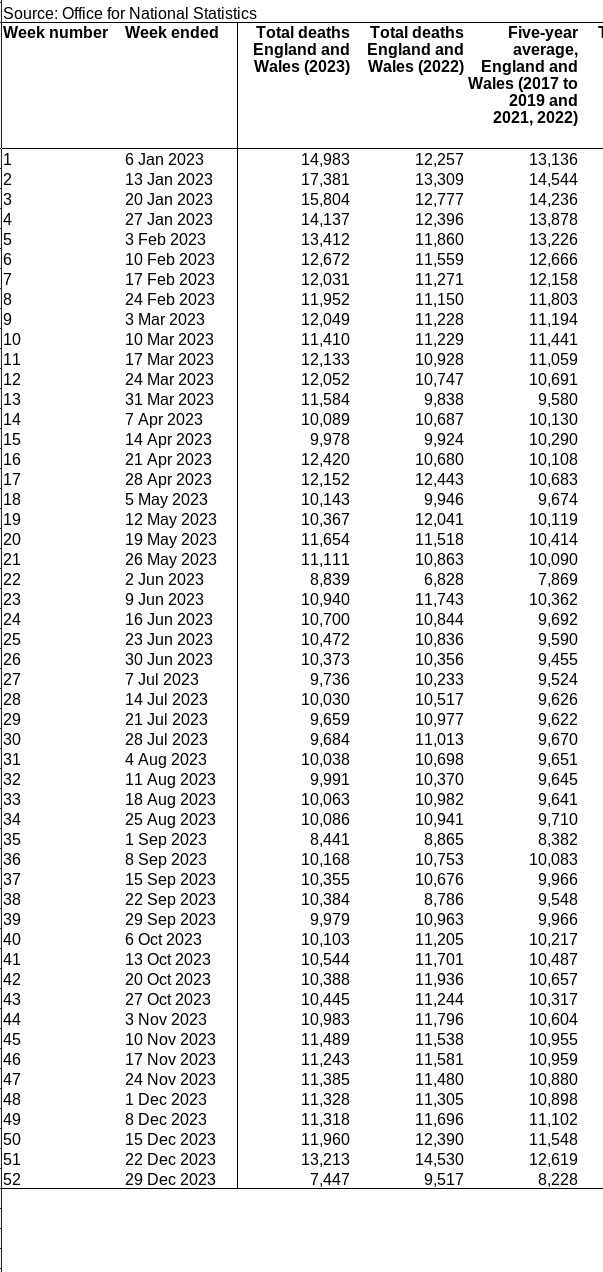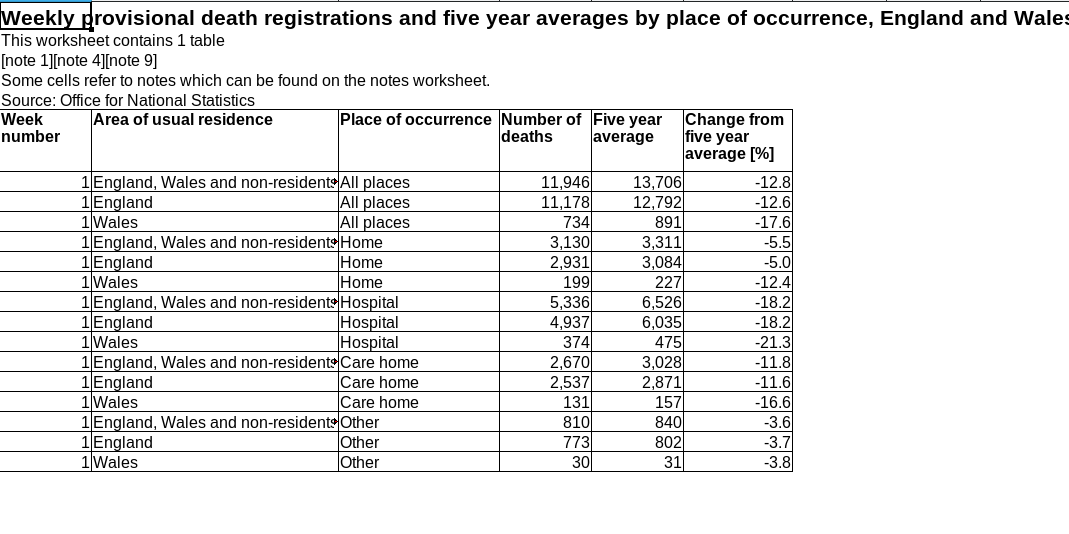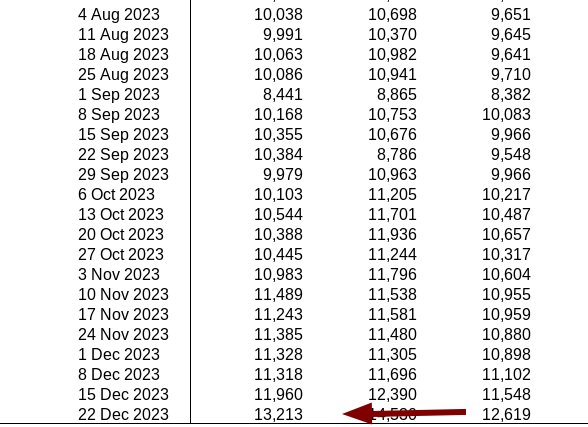2024: A Year of COVID-19 Cover-up (Massive Mortality Levels Persist, Even Now)
 AM deeply disappointed but not shocked. There’s no actual plan to look after people’s health, let alone properly inform them. This is societal or systemic breakdown.
AM deeply disappointed but not shocked. There’s no actual plan to look after people’s health, let alone properly inform them. This is societal or systemic breakdown.
Consider mortality data.
ONS changed staff assigned to the task. Now it is: “David Tabor, Merilynn Pratt and Patrycja Delong-Smith”.
What happened to the person who used to do it? Gone?
At the end of last year they admitted an error or two, which is otherwise rare:
“See correction,” it says. “Time series of deaths occurrences for 2022 in Experimental occurrences model table (Sheet 11) had not been correctly updated. This was because of a processing error and has now been corrected.”
This happened more than once. People reported based on false data.
So the staff changed, they admitted errors, and they have also changed how ONS presents this data. It makes it harder to compare current mortality to past years.
This is the old format:
And the new:
Notice they are counting 5 years of pandemic to make it seem like those numbers are finally down. They omit lots of other stuff.
In prior years it was possible to isolate pandemic years from “the real normal”.
Perhaps the “new normal” is “let’s pretend COVID is solved”.
“Ignore all the dead people and very unhealthy people, even children…”
Check out this new Finnish spin. The headline says THL: Disabled people died at greater rate during Covid pandemic. Not untrue. Disabled people, however, are distraction. All people died at a greater rate even “AFTER” (as if it ended) it. In some countries they now report that infection rates are soaring. In some it is at a record high.
The media hides the dead. So typical. Belittling the issue, downplaying the scale or the magnitude of several scandals, for which both the national media (broadcasters like Yle) and politicians can be held belatedly accountable.
This indicates a failure of the political system, the media, and health agencies. Health isn’t their priority.






 Filed under:
Filed under: 


